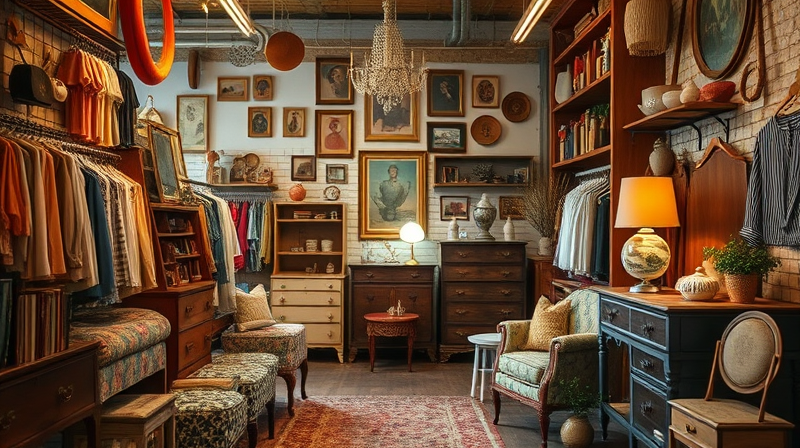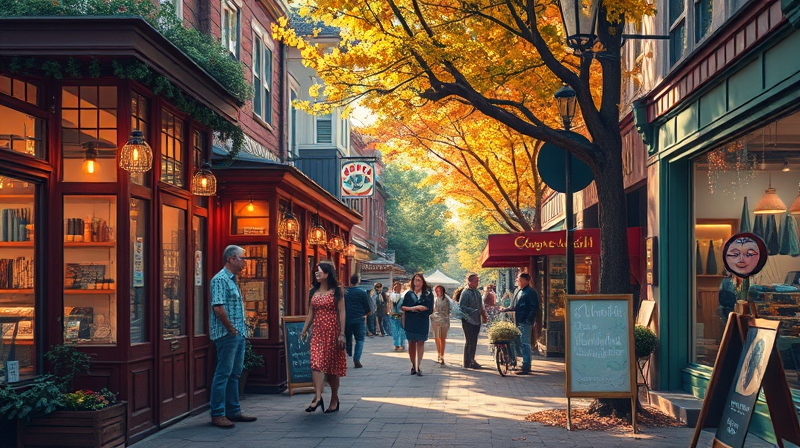Thrift shopping is a dynamic experience that combines creativity, sustainability, and the thrill of unearthing unique treasures. Whether you are searching for vintage clothing, rare antiques, or stylish home décor, the art of secondhand shopping can transform an ordinary day into a memorable adventure. In this guide, we dive deep into the world of thrifting, providing valuable tips to help you navigate thrift stores like a seasoned pro.
Embracing the world of secondhand shopping is not just about saving money—it is about making conscious choices that add character to your life. The items you discover in a thrift store carry stories and histories that you can incorporate into your personal style or home décor. When you choose to invest in pre-loved items, you are also taking a step towards a more sustainable lifestyle by reducing waste and countering the fast-fashion mentality.
Why Thrift Shopping?
Thrift shopping offers several benefits that extend beyond financial savings. One of the most appealing aspects of thrifting is its sustainability factor. By purchasing used items, you are directly contributing to environmental conservation and minimizing your carbon footprint.
- Sustainability: Reducing waste by extending the life cycle of items.
- Uniqueness: Finding one-of-a-kind pieces that are not available at mass retailers.
- Affordability: Capturing high-quality branded goods and designer items at a fraction of their original price.
Another distinctive advantage of thrifting is the opportunity to showcase individual style. Each piece you add to your collection tells a story that is uniquely yours. This approach to shopping not only enriches your wardrobe and living spaces but also supports a more thoughtful and intentional consumer culture.
Tips for Thrift Shopping Like a Pro
For newcomers and experienced thrifters alike, there are key strategies that can elevate your thrift shopping experience. By following these practical tips, you can ensure that your visits to thrift stores are both enjoyable and fruitful.
1. Have a Plan:
Before setting foot in a thrift store, formulate a clear idea of what you are looking for. Whether it is a specific type of vintage furniture, a rare book, or a unique accessory, plan ahead to streamline your search. Creating a list—either mental or written—can help you avoid impulse buys while keeping you on track.
2. Timing is Key:
Many thrift stores restock their inventory on specific days, so it is highly advantageous to shop early in the morning or on weekdays when fewer people are around. This strategy not only provides access to a fresher assortment of items but also offers a quieter environment for careful browsing.
3. Inspect Items Thoroughly:
Not every treasure is flawless. Take time to examine each item carefully for wear and tear such as stains, rips, or missing parts. When investing in vintage clothing or accessories, also check for fabric quality and authenticity. For furniture, ensure that it is structurally sound and free of signs of damage.
4. Embrace Patience:
The journey to finding hidden gems can sometimes be time-intensive. Patience is a virtue in thrifting. Explore every corner of the store—from well-organized racks to dusty back shelves—to uncover those coveted items that others might have overlooked.
5. Recognize Markers of Value:
Learn to identify quality markers that distinguish valuable finds. Look for makers' marks, authentic designs, or indicators of craftsmanship. A little research on rare or antique pieces can go a long way in confirming their worth and significance.
6. Be Open to Upcycling:
If you find a piece that isn’t quite perfect, consider it as a potential canvas for creativity. With a bit of effort such as reupholstering or a fresh coat of paint, even the most outdated items can be transformed into lively, personalized works of art.
7. Explore Online Platforms:
The opportunities for thrifting extend well beyond physical stores. Online platforms like ThredUp, Poshmark, and Facebook Marketplace offer curated selections and are perfect for those moments when you cannot physically visit a store. This digital side of thrift shopping enables you to find items from across the country and even around the world.
8. Negotiate Prices:
Don't hesitate to negotiate prices, especially if you're eyeing an item with minor imperfections. Thrift stores often allow haggling, which can result in even sweeter deals on your favorite finds.
What to Look for in Thrift Stores
Once you have your strategies in place, it is important to know what type of treasures to hunt for. Here are a few categories to keep an eye on:
- Clothing and Accessories: Discover vintage clothing, designer pieces, and costume jewelry that add flair to your personal style.
- Home Décor: Search for unique furniture, artistic lighting pieces like crystal chandeliers, and distinctive kitchenware that speak to your sense of style.
- Collectibles: Keep an eye out for rare books, vinyl records, vintage toys, and board games that can either be part of your collection or even resold in the future.
Each category offers its own set of challenges and excitement. With thorough research and a keen eye for detail, you can become adept at spotting the best items available in any thrift store.
Remember, thrift shopping is more than just a way to save money—it is an expression of individuality and a celebration of sustainability. As you navigate through the aisles of your local thrift stores, keep an open mind and a creative heart. Every piece you find is not only a bargain but also a story waiting to be told, a piece of history that you can integrate into your life.
So, next time you venture out for a shopping trip, arm yourself with these tips, a reusable bag, and an appetite for adventure. The treasures you find might just be the spark that inspires your next creative project or personal style transformation. Happy thrifting!








